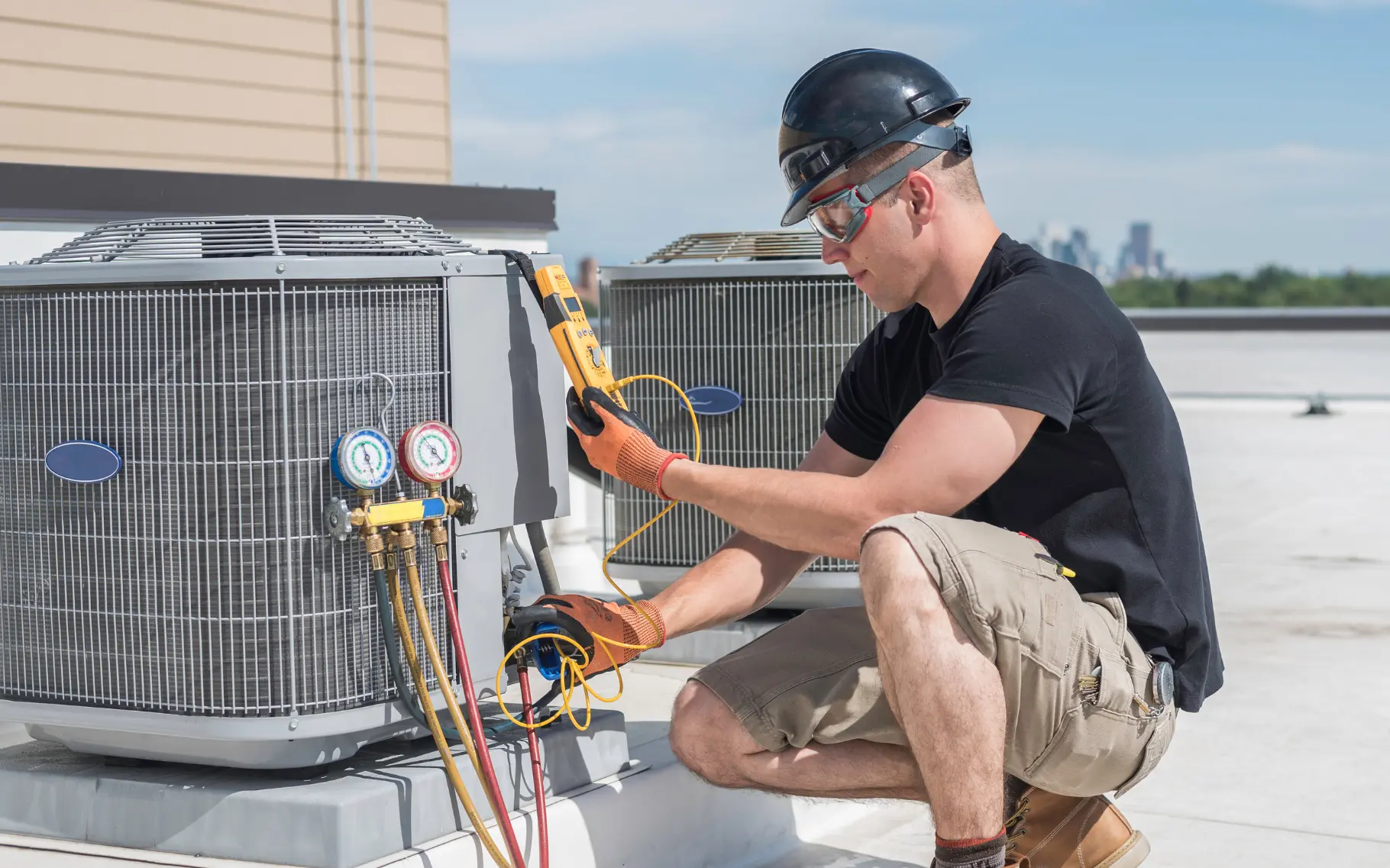Accurate estimating is the foundation of every successful HVAC business. While a miscalculation may appear small, it can eat into profit margins or lose you a bid entirely.
As your operation scales and you start to target larger, more complex targets, it’s important to stay as accurate as possible.
So how do you do that? With HVAC estimating software.
Estimating software is powerful construction technology that helps contractors develop more accurate bids faster while still maintaining consistency across their teams and other offerings.
This guide covers:
- How to know when your business is ready for estimating software
- What features to look for
- The best HVAC bidding software options currently available on the market
Signs your business needs HVAC estimating software
If you’re managing just a few installs or service calls in a week, you may be able to get by with spreadsheets, manual templates, or even with free HVAC estimating software. However, as your client list grows, this becomes a roadblock for your team members and your business.
Here are a few signs that your business is ready to adopt new HVAC estimating tools:
- You’re generating multiple quotes per week.
Manually calculating costs for every single system takes up too much time — especially as your volume increases. - Your team is growing.
Each contractor has a different opinion and experience, which can lead to inconsistent quotes and pricing errors across your single team. - You handle multi-trade projects.
If you’re branching into plumbing or another trade, using a centralized estimating tool can help manage overlapping materials, labor rates, and permitting requirements. - You’re losing multiple bids or regularly underpricing jobs.
Inaccurate estimates make your business less competitive, and therefore less profitable. - You want to grow your business.
Streamlined estimating allows you to bid more jobs, faster, without sacrificing accuracy.
Features to look for in HVAC bidding and estimating software
The best HVAC estimating software should balance accuracy, ease of use, and integration with other apps. When evaluating your options, prioritize the following features:
- Ease of use
The software should be intuitive and allow all of your staff to generate estimates quickly with minimal training. - Customization
You should be able to adjust labor rates, markups, and materials to match your company’s pricing model. - Automation
Look for prebuilt templates, automated material takeoffs, and built-in pricing databases to minimize manual entry. - Integration
Software that syncs with your current construction project management software, accounting, and dispatching tools helps to maintain data consistency. - Cloud-based access
Enables remote estimating, mobile quoting, and collaboration across multiple locations. - Scalability
As your business grows and you offer new services, your software should grow and adapt with you.
HVAC estimating software vs. generic estimating tools
Most contractors and construction teams will start with simple, generic tools like Excel. These tools might work fine in the beginning, but they lack HVAC-specific functionality and other collaborative features that can break your workflow as your team grows.
Generic estimating software can calculate totals and track materials, but it doesn’t include the HVAC-specific catalogs, load calculations, or duct design integrations that HVAC contractors require.
HVAC estimating software will often include:
- Built-in parts databases with current AHRI-rated equipment and manufacturer pricing.
- Automatic load calculations and duct sizing tools that ensure accuracy in your system design.
- Energy efficiency and rebate integrations to strengthen customer proposals
Choosing HVAC-specific estimating software means fewer errors, more accurate bids, and a faster path from estimate to a signed contract.
6 best HVAC bidding software solutions
1. ServiceTitan
Best for: Growing and established HVAC businesses that need an all-in-one management platform
ServiceTitan offers end-to-end functionality in one platform. It allows contractors to estimate, schedule, dispatch, and invoice work all within one tool. Its estimating tools include customizable templates, flat-rate pricing, and real-time cost tracking. This tool is ideal for HVAC contractors scaling operations or managing multiple crews.
- Pros: Full-featured, great integrations, strong reporting functionality
- Cons: Premium pricing, best for mid-to-large sized businesses.
2. Housecall Pro
Best for: Small to mid-sized contractors
Housecall Pro combines easy job management with professional estimating and invoicing tools. Its mobile app allows techs to build estimates on-site and convert them into work orders instantly.
- Pros: Simple interface, affordable pricing, strong mobile experience
- Cons: Fewer customization options for complex commercial jobs
3. Jobber
Best for: Contractors with mobile field teams
Jobber makes it simple to create, send, and follow up on estimates directly from your phone or your desktop. You can attach photos, parts lists, and pricing details while syncing with QuickBooks for seamless bookkeeping.
- Pros: Cloud-based, user-friendly, good automation tools
- Cons: Lacks advanced HVAC-specific calculations
4. Data-Basics (SAMPro Enterprise)
Best for: Commercial HVAC firms and enterprise contractors
SAMPro Enterprise by Data-Basics is a powerhouse solution that includes robust estimating, project management, and service operation tools. Designed for large-scale mechanical and HVAC operations, it supports complex multi-phase bids and job costing.
- Pros: Comprehensive feature set, ideal for complex workflows
- Cons: Steeper learning curve, higher cost
5. WrightSoft Right-C
Best for: HVAC engineers and contractors who need load calculations
WrightSoft’s Right-C software specializes in HVAC design and load calculations. It offers advanced estimating capabilities that connect directly to system design specs, ensuring bids are based on precise performance data.
- Pros: Excellent for technical design integration, accurate results
- Cons: Best suited for users with HVAC engineering knowledge
6. FastDUCT / FastPIPE
Best for: Mechanical and ductwork contractors
FastDUCT and FastPIPE are tailored for HVAC sheet metal and piping estimation. This ductwork estimating software offers automated takeoffs, material pricing updates, and labor calculations specific to duct fabrication and installation.
- Pros: Industry-specific, very accurate takeoffs
- Cons: Limited general business management features
How to integrate HVAC estimating software into your business
Creating new workflows and adopting new processes can be a challenge. Integrating new software is no different. If you follow a few simple steps and go in with a simple roll out strategy, you can have a smooth and effective implementation process.
- Audit your current estimating workflow. Identify time-consuming steps and common errors in the HVAC estimating process.
- Select your implementation team. Include estimators, salespeople, and technicians who will use the software on a daily basis.
- Import existing data. Bring in customer lists, price books, and historical quotes to expedite the setup process.
- Train your staff. Use vendor tutorials, webinars, and pilot projects to build confidence before going live.
- Integrate with your existing systems. Connect to your accounting, CRM, and scheduling tools for seamless operations.
- Measure success. Track metrics like estimate turnaround time, win rates, and profit margins to measure ROI.
Streamline business growth with new software
The right software for your business does more than just automate the estimating process — it empowers your team to quote confidently, win more work, and deliver consistent customer experiences. Investing in tools such as HVAC estimating software provides you the precision and speed you need to stay competitive.
As your business grows into new areas, consider other tools that can help streamline and grow your business. Tools like permit management software consolidate complicated permitting processes into one simple tool.
Instead of juggling paperwork, emails, and city portals, permit software centralizes every submittal, approval, and inspection into one streamlined dashboard. It gives you real-time visibility into where your permits stand, helps prevent costly delays, and keeps your operations running smoothly.
PermitFlow is built to do exactly that. It automates the permitting process for builders, contractors, and HVAC specialists — from preparing applications to tracking approvals — so you can stay focused on winning jobs and delivering quality work.
Ready to pull permits faster and take your HVAC business to the next level with PermitFlow? Talk to one of our experts today to get a demo!








